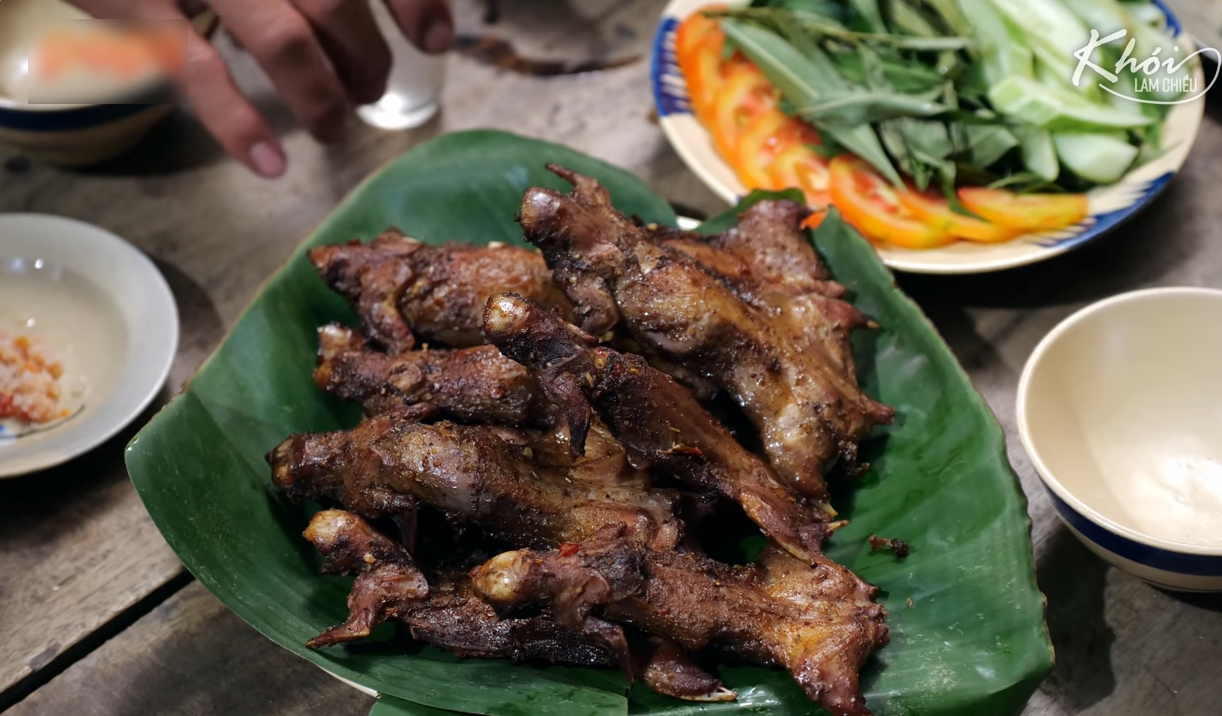Field rats are a popular ingredient in many dishes across the Mekong Delta, where locals are particularly fond of their rich and flavorful meat. These rats primarily feed on rice, cassava, corn, and sprouts, which gives their meat a fatty, aromatic taste.

Mr. Ut Thuong, a resident of Dong Thap, shared that field rats are abundant in the Dong Thap Muoi region. They are available throughout the year, but the best quality rats can be found during the flood season or after the harvest. At these times, locals head to the fields to trap rats, clean them, and prepare them for cooking.
Field rats can be prepared in various ways, including braised, fried, boiled with lemon leaves, stir-fried with lemongrass and chili, cooked in coconut water, grilled with fermented bean curd, or stir-fried with curry powder. However, the most popular and beloved dish is lu-roasted field rats, also known as clay pot-roasted rats.
To make the best lu-roasted field rats, locals choose healthy, plump rats weighing 300 to 400 grams or more. After trapping the rats, they are scalded in hot water to make it easier to remove the fur and clean them.
The rats are gutted, with their heads and feet trimmed. The carcasses are then rinsed with saltwater or diluted alcohol (depending on the region) to eliminate any odors and left to dry.
 |
 |
Depending on individual preferences, the rats are marinated with different ingredients and spices. Typically, they are seasoned with garlic, lemongrass, chili, fish sauce, salt, and MSG. Sate sauce and five-spice powder are also added to enhance the flavor.
After allowing the seasoning to soak into the meat for 15-20 minutes, the rats are placed on metal hooks and hung inside a clay pot. The pots used for roasting are often designed with a hole at the bottom to allow smoke and air to escape.
The rats are roasted inside the clay pot, with the lid opened every 10 minutes to turn them over. Once the meat is cooked, it is brushed with honey to give the dish a beautiful golden-brown color and an irresistible aroma.

The best clay pot-roasted field rats have crispy, puffed skin with a reddish hue, while the meat inside remains juicy and tender without being dry.
The hot, freshly roasted rat meat is delicious on its own or dipped in chili salt. To cut the richness, it is often served with herbs, banana flowers, or slices of tomato and cucumber.

Photo credit: Khoi Lam Chieu
At first glance, and even after hearing the name of this famous Mekong Delta dish, many diners admit they lack the courage to try it. However, those who muster the bravery to taste it are often captivated by the rich, rustic flavor of this rural specialty.
Experienced food enthusiasts describe the roasted rat meat as tender, juicy, and fatty, with the skin offering a crunchy, savory bite, reminiscent of suckling pig.
What started as a humble dish for local farmers has evolved into a renowned specialty, now featured on the menus of many restaurants, pubs, and tourist spots throughout the Mekong Delta.
While field rat meat can be prepared in a variety of mouthwatering ways, diners are advised to exercise caution, as the meat may pose certain health risks.
Thao Trinh